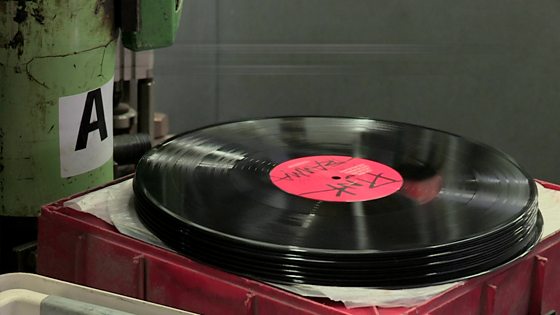
Whether gathering dust in your loft or currently spinning on your turntable, it`s a fair bet that at least some of your vinyl records came from a small factory in the Czech Republic.
The facility in question is the headquarters of GZ Media, based in the small town of Lodenice, 25km (16 miles) west of the Czech capital, Prague.
GZ is today the world`s largest producer of vinyl records, of which it expects to press 30 million this year, for everyone from the Rolling Stones and U2, to Lady Gaga and Madonna.
The success of the company is a far cry from the early 1990s, when vinyl records appeared to be on the way out, with music fans having switched en mass to compact discs.
Back in the early 1970s more than three-quarters of album sales were on vinyl, but by the 1990s that had plunged to just 1.
"In 1993 our output was at its lowest, vinyl was almost dead," says GZ`s chief executive Michal Sterba.
"If we`d have stayed as a vinyl-only producer in the 90s, GZ would be no more."
The operation had only become a private company two years earlier after the fall of communism.
Prior to that it had been a state-run enterprise called Gramofonove Zavody (Gramophone Record Factory) which had started in 1951, and had pressed records for the world`s largest music companies.
With demand for vinyl having dwindled, GZ realised that it had to diversify to survive, so it branched out into printing and making packaging for consumer goods.
Crucially though, it kept pressing vinyl to satisfy what little demand there was. At the lowest point in 1993 it made just 350,000 discs.
"We wanted to be the last company standing in the field of vinyl record production," says Mr Sterba.
So when the resurgence of vinyl began around 2010, GZ was in a position to take advantage of it.
Unlike most rivals, GZ still had the vinyl-making equipment and the expertise. Its successful diversification also gave it the cash to invest.
Mr Sterba says: "Our competitors could buy machinery and materials, but the know-how is very hard to acquire."
The firm`s printing and packing capabilities give it another advantage over its rivals, he adds: "As well as producing the actual vinyl discs, GZ also makes the packaging, prints the artwork and any extras such as posters or booklet."
One particularly tough job, he recalls, was producing a real metal zip on the cover of the reissued Rolling Stones` Sticky Fingers album.
How vinyl records are made
To keep up with demand, GZ Media`s Czech factory now runs 24 hours a day, seven days a week, and employs 1,600 permanent workers.
It`s a fast-paced operation at every stage of the production process; from the initial stamping to the high-speed ballet of forklifts loading trucks for delivery.
The company has invested $20m in equipment, building 12 new presses, but the old still runs alongside the new.
Bright white, computer-controlled stations sit next to their huge, pale-green iron counterparts, still dripping oil into trays and buckets.
GZ`s revenues this year are expected to total $110m (£83m), and are growing by 9-10% per year. Meanwhile, its vinyl output has tripled since 2010.
For the industry as a whole, global sales of vinyl records are expected to reach $1bn in value this year. This may be just 6% of total music industry revenues but vinyl sales are now at a 25-year high.
With most of its customers in North America, GZ recently bought a vinyl plant in Memphis, Tennessee, to supplement its Czech production. It has also opened a production facility in Ontario, Canada.
GZ still makes albums for small indie bands - the punk and metal bands that kept the company going in the 1990s, but now it also works with massive global stars.
"We`ll still press 100 records for a small metal band," says Mr Sterba, "but we`re also pressing 100,000 for U2."
"As for the future," he says, "we`re concentrating on making a success of our plants in North America. But in the longer term, we think manufacturing in Asia and preferably Japan [as well], is the right thing to do."
Yet, while vinyl sales are growing, some who buy the records don`t actually play them. Last year a BBC/ICM poll found 48% of those questioned said they`d never played the vinyl they`d bought and 7% said they didn`t even own a turntable.
These fans buy a vinyl album for the "feel" of owning a physical object and for the artwork that often comes with it - but they never actually play it.
While vinyl sales are growing, they remain tiny compared with their 1980s heyday, says Paul Lee, a music industry expert at accountancy group Deloitte.
"Vinyl`s first and biggest peak was back in the 80s when a billion records, just albums were sold per year. This year we`re expecting about 40 million, so it`s about one 25th. so it is nothing like that we had back in the 80s."
Mr Lee adds: "The reality is vinyl is a lovely product, it`s also very difficult to consume compared to just tapping in the name of a song on a smart phone. so we would expect the market to be approaching a peak."
Yet with music giant Sony announcing earlier this year that it was to re-open its vinyl manufacturing plant in Japan for the first time since 1989, it doesn`t look like the vinyl revival is coming to an end any time soon.


0 comments:
Post a Comment